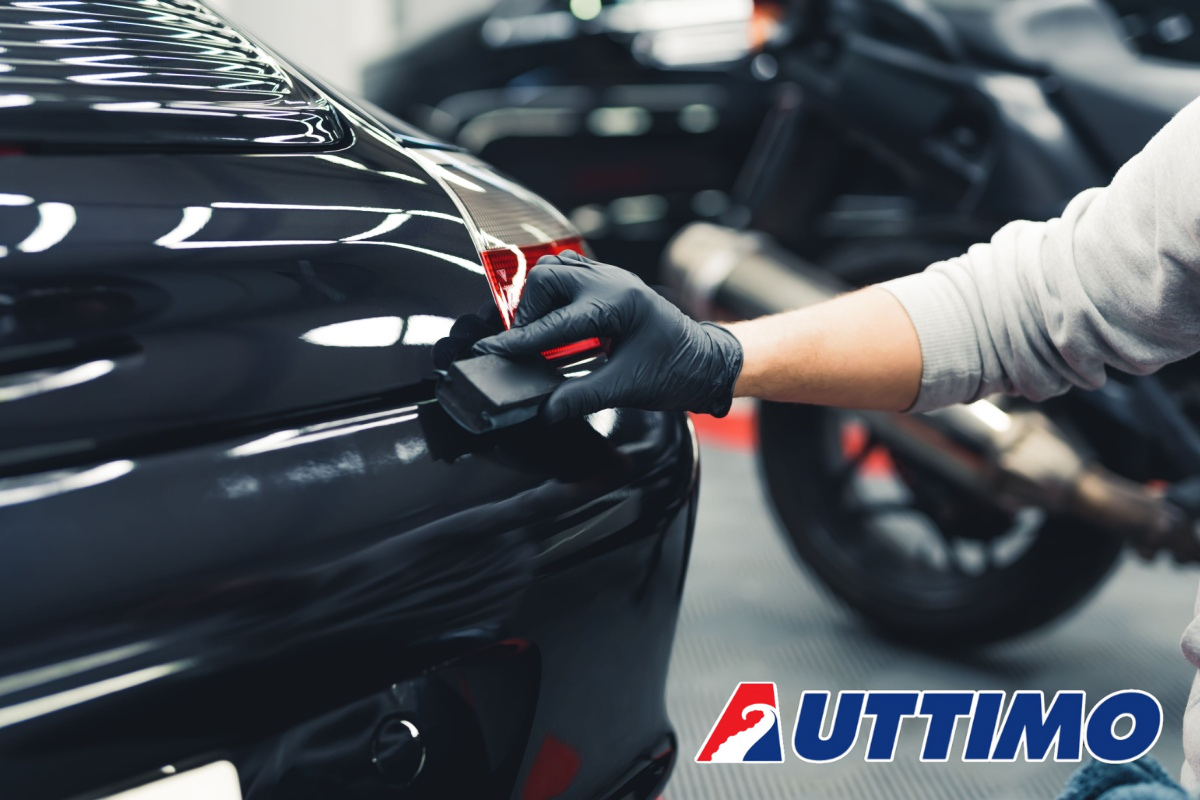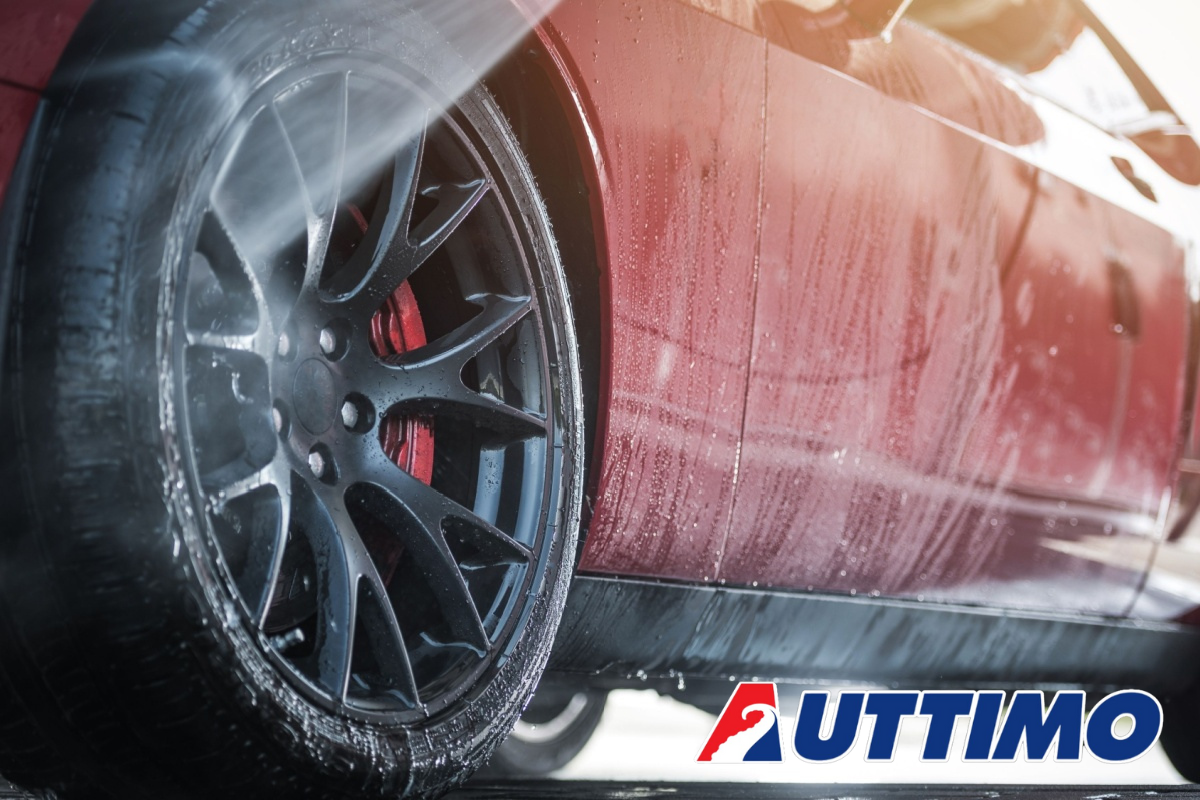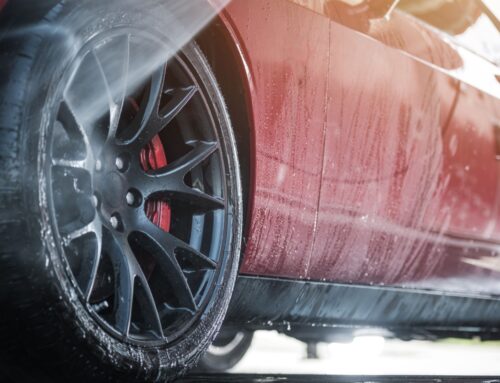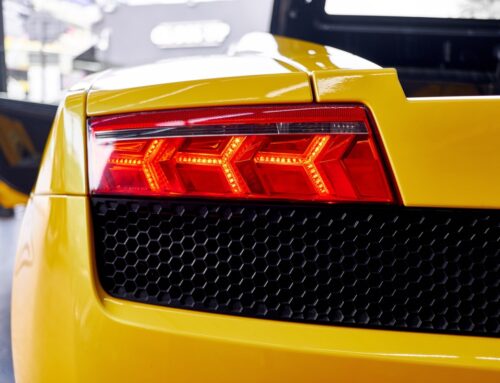Ceramic Coating is a revolutionary detailing product that has taken the car enthusiast’s world by storm. It has become increasingly popular in recent years, and more and more products are being released that offer superior protection for vehicles. As such, many people have questions about what it is and why they should invest in it for their cars. Some of the main questions I hear over and over again are “What exactly is ceramic coating?” and “why should I use ceramic coating on my car?” Is ceramic coating worth the extra cost and effort for someone who regularly protects their car’s paint using more traditional waxes and sealants? Let’s dig into the details and hopefully, you can make up your mind whether or not a ceramic coating product is right for you and your pride and joy.

What is Ceramic Coating?
What is Ceramic Coating?
A ceramic coating product for a car’s paintwork is a liquid polymer that leverages nanotechnology to create a permanent bond with the vehicle’s paint. The coating chemically bonds with the car’s clear coat, creating an extra layer of protection from damaging UV rays, acid rain, salt water and other environmental contaminants. Ceramic coating products are usually made from silica-based polymers such as quartz or silicon dioxide (SiO2). These polymers are strong and provide long-term protection against scratches and swirl marks as well as help repel dirt and grime.
When applied correctly, these polymers cross-link to each other at the molecular level creating an ultra-thin protective film over your car’s paint. This protective film is highly resistant to oils, chemicals and environmental contaminants making it the perfect defence against fading, cracking and oxidizing. The coating also helps your car stay cleaner for longer by creating a hydrophobic barrier that repels water and dirt. This can reduce the amount of time needed for routine cleaning and maintenance.
In addition to protecting your car’s paint from external elements, ceramic coatings can also help maintain the overall appearance of your vehicle. By reducing build-up on the surface, this coating will help keep your car looking brand new while maintaining its true color over time. The hydrophobic element of a ceramic coating helps beads water away off the surface quickly preventing streaking or discolouration caused by water spots or bird droppings.
How Does Ceramic Coating Differ from Traditional Wax?
Unlike traditional waxes, ceramic coating products provide long-term protection against dirt and grime. This is because the coating creates a permanent bond on the car’s surface that lasts up to 5 years or longer. Traditional waxes have to be reapplied every few months in order to maintain their effectiveness.
Additionally, ceramic coatings are much more resistant to contaminants such as oils and chemicals making them ideal for people who live in areas with heavy air pollution or extreme weather conditions. Ceramic coatings are also more robust than traditional waxes when it comes to providing protection against scratches and swirl marks caused by washing and drying your vehicle. The coating creates an extra layer of protection over the paintwork which is harder and smoother than a wax finish.

Why Ceramic Coat Your Car?
Why Ceramic Coat Your Car?
There are many reasons why ceramic coating is a great option for your vehicles paint, some of the main benefits include:
Protect The Paintwork
Ceramic coating provides a protective layer to the paintwork of your car. This layer helps ward off dirt, dust, and other contaminants that can damage the paint and make it look dull or faded over time. It also protects against UV rays which can cause discolouration, oxidation, and fading. A ceramic coating will protect your car from all the elements it faces during everyday driving.
Longer Lasting
Unlike traditional car waxes and sealants, ceramic coatings are designed for longevity. The protection that comes with a ceramic coating lasts much longer than any other automotive protection product on the market. This means you don’t have to worry about reapplying every few months like you would with other products.
Ceramic Coated Cars Stay Cleaner For Longer
Not only does a ceramic coating protect your paint from dirt and debris, but it also helps keep it cleaner for longer. This is because the layer of protection created by the coating makes it much harder for any dirt or grime to stick to your car’s exterior. And since less dirt sticks, you won’t have to worry about washing and waxing as often.
Eliminates the Need for Car Wax
With a ceramic coating on your car, you don’t need to use traditional car waxes or sealants anymore. The protective layer that comes with the coating eliminates the need for these products, saving you time and money.
Cost
While a ceramic coating may seem expensive at first, in the long run it can actually save you money. Since ceramic coatings last much longer than any other automotive protection products, so you won’t have to replace it as often. Ultimately you will end up saving money over time by investing in a ceramic coating instead of traditional wax products.
Improved Shine And Gloss
Ceramic coatings also provide an improved shine and gloss to the paintwork of your car. This is because it creates a smoother finish, which reflects light more efficiently than traditional paints or waxes, making your car look brighter and shinier. In addition, ceramic coatings are resistant to fading over time like other automotive protection products. So you can be sure that your car will stay looking cleaner for much longer.

Should you get your ceramic coating done professionally?
Should you get your ceramic coating done professionally?
When it comes to applying ceramic coating, you have the option of doing it yourself or getting a professional to do the job for you. It’s important to understand the pros and cons of each approach so that you can make an informed decision about which route is best for your needs.
Doing it yourself is much more cost-effective than hiring a professional detailer, since you won’t need to pay someone else’s labor costs. Additionally, you’ll be able to take pride in being able to say that you applied the coating yourself, and when done correctly, DIY ceramic coatings can sometimes last just as long as professionally installed ones.
That being said, without the right tools and expertise, there’s the potential to cause damage to your car’s paint job if you make a mistake. If the coating isn’t applied evenly, it won’t last as long and can look unsightly. Additionally, DIY ceramic coatings are more complicated than simply waxing a car and require an investment of time in order to get them right. Often, with the time and energy required to get it right, leaving your ceramic coating installation to a professional is a good idea.
Getting it Professionally Installed
A professional installer will have access to high-quality tools (like lamps for curing the coating) and supplies that can ensure the best application possible for your vehicle. Professional installers also have the experience needed for a perfect finish every time – no guesswork required. Additionally, a professional will typically provide warranty coverage in case something does go wrong with your installation.
Hiring a professional can get expensive, particularly if you have a large vehicle. Additionally, it’ll take longer for the job to be done as compared to DIY installation, so you may need to wait several days for the coating to be applied and the car to be returned.
How Much Does Ceramic Coating Typically Cost To Get Installed Professionally?
If you’re wondering how much ceramic coating costs to get installed professionally, there are a few different factors that influence the cost. Firstly, the amount of preparation and polishing needed before the coating can be applied is an important factor – this will vary from car to car depending on size of the vehicle and condition of the paint. In some cases, more intensive treatment may need to be carried out in order for the coating to adhere properly. The size of your car also has an impact on ceramic coating cost – larger cars require more materials and labour time which means a higher price tag.
And lastly, the cost of the actual ceramic coating used will have a large impact on overall cost too – some coatings offer superior protection but come at a higher price point. Overall, ceramic coating cost is not set in stone and can vary greatly depending on the factors mentioned above. Typical cost for installation can easily run into the 4 figures on average.
At the end of the day, it’s up to you whether you want to apply ceramic coating yourself or opt for a professional installation. If you’re on a budget and willing to invest time into research and practice ahead of doing the job yourself, then DIY is definitely an option worth considering.

Preparing a Car for Ceramic Coating – What’s Involved?
Preparing a Car for Ceramic Coating – What’s Involved?
Removing Above Surface Contaminants
The first step in prepping your car for ceramic coating is to remove any above surface contaminants such as tar, bugs, tree sap, and road debris. This process involves using fallout remover, clay bar, and other specialized tools to clean the surface of the paintwork. It’s important to apply these products carefully and gently to avoid damaging the paintwork while still ensuring a thorough clean. Once completed, you should have a smooth finish that’s ready for polishing.
Polishing the Paintwork
Giving it that “Showroom Shine”: The next step in preparing your car for ceramic coating is polishing the paintwork. This involves using a machine polisher to buff away scratches and imperfections in the paintwork, leaving it with a glossy showroom finish. There are many different types of polish available for this process, so be sure to select the one that’s most suitable for your car’s paintwork.
Cleansing the Paintwork
Ensuring Proper Bonding Before you can apply the ceramic coating, you must make sure any oils and polishes from the previous steps have been removed from the surface of the paintwork. This is done by cleansing the paintwork with a specialized cleaner designed specifically for this purpose. Doing this will ensure that when you apply your ceramic coating, it bonds correctly and lasts for as long as possible.
How Many Coats Of Ceramic Coating Are Needed?
Typically, one to two coats of ceramic coating are required for optimal protection and shine. However, the exact number of coats needed can depend on the product being used. Some products may require more than two coats to achieve maximum benefits. Additionally, if you want even more protection and a durable finish, then multiple layers of ceramic coating might be necessary. To determine the exact number of coats your car needs, it is best to follow the manufacturer’s instructions or consult with an automotive detailing professional who is experienced in working with ceramic coatings.

Can You Use Ceramic Coating On Other Parts Of The Car? (Trim, Glass etc.)
Can You Use Ceramic Coating On Other Parts Of The Car? (Trim, Glass etc.)
While ceramic coating is typically used on painted surfaces, it can also be used on other parts of the car like trim, glass, and wheels. However, it is generally better to use dedicated trim and glass coatings when coating these areas as they offer greater protection against harsh weather conditions. Using standard ceramic coatings on non-paint surfaces may not provide optimal protection or give you the desired results.
Ultimately, using specific products designed for different parts of your car will help ensure that each area is adequately protected.
How Long Does Ceramic Coating Take To Cure?
When it comes to ceramic car coating, the curing time will depend on a few factors. The type of coating product you choose is one of the most important variables. Most standard ceramic coatings will cure within 24 hours at room temperature. However, if you want a more advanced level of protection, there are some products that require special UV lamps to properly cure and fully activate their protective properties.
These types of coatings usually take anywhere from 48 hours to 72 hours to fully cure. Additionally, the thickness of the coating applied can also affect how long it takes for the product to fully cure – thicker applications typically require longer periods for complete curing than those with thinner layers. Finally, the environmental conditions in which you are applying the coating can also affect curing time. Under ideal conditions – such as a warm, dry environment – the coating will cure quickly, whereas a damp or cold environment can cause the curing process to slow down significantly.

What Precautions Should You Take While The Coating Is Curing?
What Precautions Should You Take While The Coating Is Curing?
When it comes to ceramic coating, the curing process is just as important as the application itself. During this period, it’s essential to take certain precautions in order to ensure that your coating cures properly and maintains its protective capabilities.
Avoid Moisture
Firstly, you should avoid washing or touching your car during the curing process. Washing or touching the surface while it is still curing can cause premature damage or degradation of the coating, resulting in reduced protection and decreased longevity of your vehicle’s finish.
Avoid Harsh Conditions
Additionally, you should avoid exposing the car to direct sunlight or high temperatures. If your coating requires a UV lamp for curing, make sure that you use it as instructed and don’t overexpose the car to its rays, as this can cause discoloration or damage to the finish.
With proper care and attention, most coatings will fully cure in 24 to 72 hours. Following these precautions will ensure that your coating is ready to provide you with the maximum level of protection for years to come.
Maintaining Your Car After Ceramic Coating
Washing your Car
- For best results, wash with recommended soaps: Any PH neutral (mild) general purpose cleaner on a bi-weekly basis ( or as Necessary ) to avoid excessive contamination build-up.
- Avoid washing in direct sunlight to minimize streaking and water spotting.
- Wash from the top down leaving the dirtiest sections for last to avoid cross-contamination.
- Use separate soap and sponge/mitt/towel for wheels to prevent cross-contamination.
Drying Your Car
- Always dry your car fully as soon as possible after washing and never leave to “air” dry. Tap water contains minerals that may leave deposits creating water spots on your paint.
- Only use quality microfiber towels for best results and avoid aggressive wiping, allowing the material to absorb the water naturally.
Spot Removal
- Never use aggressive products to polish the coating or remove surface contamination.
- Never use excessive force to remove spots.
- Bird droppings, tar, sap, etc. should be removed as soon as possible to avoid temporary staining or hardening on the coating. Any staining left behind from the bird droppings will break down over a few days without affecting the coating.
After Washing
If you want to keep your ceramic coating in top shape, it is important to perform regular maintenance. A good way of doing this is by applying a spray sealant such as CarPro Reload every few months. This will help to refresh the protective properties of the coating and make sure that your car remains looking its best and staying protected for much longer.
How Long Does Ceramic Coating Last?
Ceramic coatings for cars can last between 1 and 5 years depending on the type of coating used, as well as how well it was applied. Some coatings are known to have a shorter lifespan than others, while some premium ceramic coatings can last up to five years or more when applied properly.
The quality of the product, the environment in which it is used, and how often you maintain your car all play a role in determining its longevity. If you’re looking for durability, make sure to invest in a good quality product and spend time maintaining your car’s paint job to keep it looking fresh for longer. With proper care and maintenance, your ceramic coating should outlast even the toughest conditions.
How to Remove Ceramic Coating
Ceramic coating has earned its name because it is very tough, durable and long-lasting. While this may be great when it comes to protecting your car, it is not so great if you need to get it off. This level of hardness can cause problems when removing. Most regular clays and polishes have very little effect on the hard surface of the coating. Below is a quick summary of the options for removing the ceramic coating from your car.
Chemical Removal
Ceramic Coating has a resistance to a lot of chemicals, but not so much against alkaline products. ( be careful using strong chemicals on your cars paintwork)
Polishing
A heavy Cut Polishing Pad and A Heavy Cut Polish can be effective for removing most coatings.
Claying
An Abrasive Clay can also go a long way in removing the coating. I would typically recommend using a machine polisher and a cutting compound for quickly removing coating where the application has gone wrong, but this should only be done by a professional.

How To Tell If A Car Has Ceramic Coating Still On The Paint?
How To Tell If A Car Has Ceramic Coating Still On The Paint?
The most obvious sign is that the water will bead up and roll off quickly – much faster than if there wasn’t any ceramic coating present. This is because of the hydrophobic properties of the coating, which repels water and forms a protective barrier against dirt, grime and other contaminants sticking onto your vehicle’s paintwork. If you see this beading effect, it’s a good indication that there is still some ceramic coating remaining on your car’s paint. You may also find that when wiping away the droplets with a cloth or towel, it won’t leave streaks or smears – another sign that there is still a layer of ceramic coating present.
How To Remove Scratches From Ceramic Coating
The only way to truly remove scratches from your paintwork is by polishing and re-applying the coating again. If the scratches are not too deep, you can try to fill them in with a product like Carpro Essence Plus. This product is specifically designed to repair and fill in small scratches in your ceramic coating.
How To Remove Water Spots From Ceramic Coating
If you’re dealing with water spots on your ceramic coating, the best thing to do is to use a specific product like GYEON Q2M Water Spot Remover . This solution works hard to break down and dissolve contaminants that cause water spots while keeping the ceramic coating intact.



